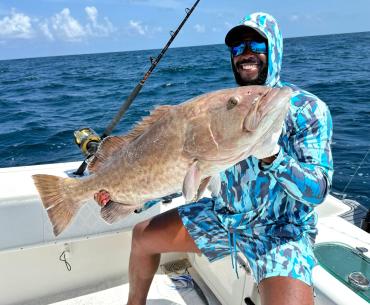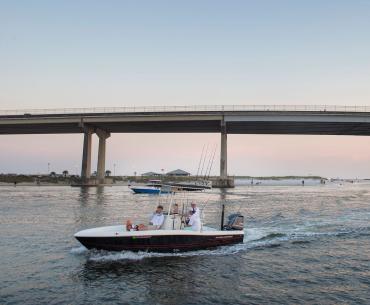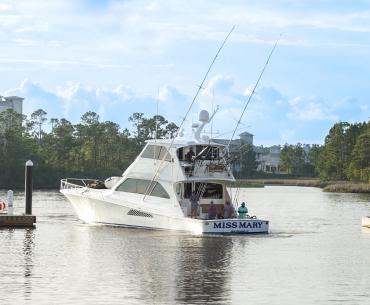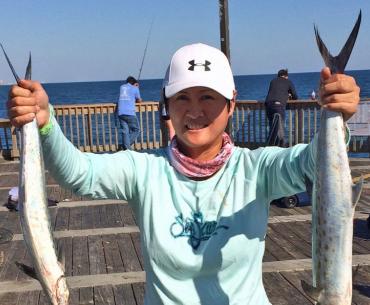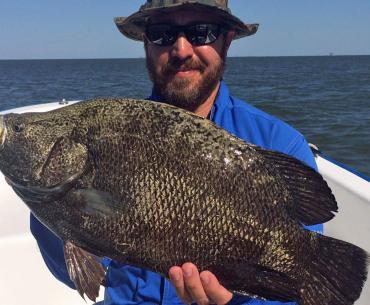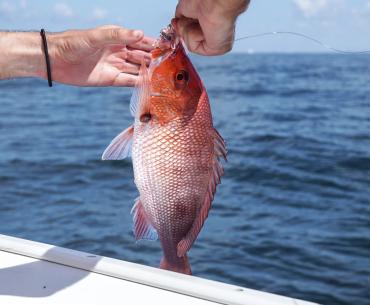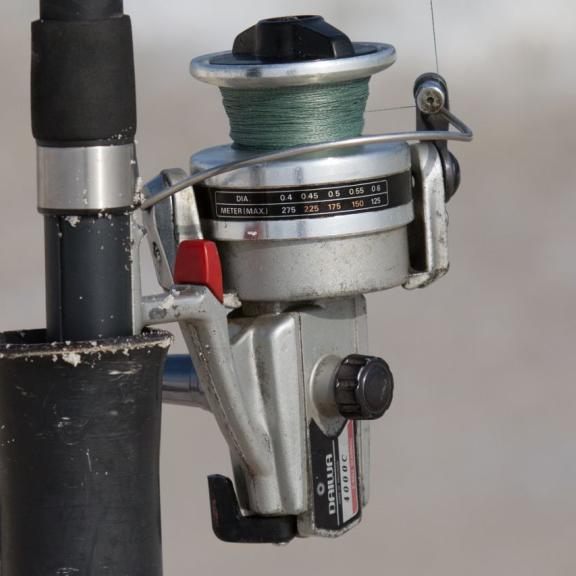
Serious inshore anglers who love to catch speckled trout will find a way to hook their favorite fish anytime and in most weather conditions.
Because of various factors, fishing activity has seen a significant shift from offshore species, like Alabama’s iconic red snapper, to inshore species, like speckled trout and redfish. Although speckled trout are most often targeted by anglers during the warmer months, specks can be caught year-round if you head for the right spots under the right conditions and are patient.
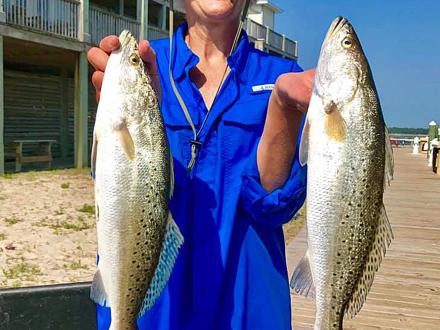
Speckled Trout Regulations
Speckled trout have a long spawning season from May through September, and the Alabama Marine Resources Division documented that fishing shifts to the inshore species. To protect the larger females that do most of the significant spawning, Marine Resources changed the regulations to manage the pressure on the fish by reducing the bag and size limits. The bag limit is now six fish per person per day with a slot limit of 15 to 22 inches. However, anglers are allowed to keep one fish per day that is larger than 22 inches.
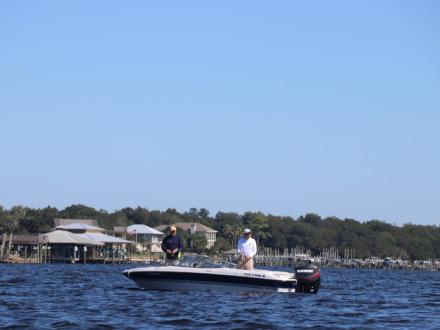
Catching Speckled Trout in Fall & Winter
During the fall, as water temperatures decline, the fish move into deeper bays and migrate into the rivers and estuaries, following the bait species and shrimp. Sometimes, the trout will hang out in locations with easy access to deeper water. They tend to move up on the flats during the warmer part of the day and retreat to deeper water when the temperatures fall.
After the first severe cold front, the fish will head to the deeper holes, and their metabolism will start to slow. That means anglers will have to slow down their presentation to get the fish to bite. Patience is the key.
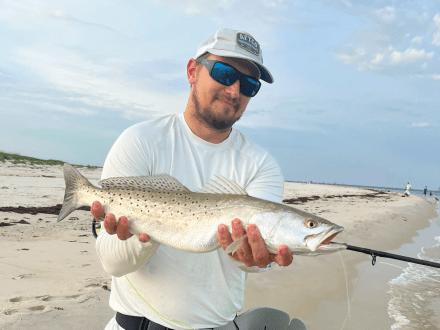
Catching Speckled Trout in Spring
When the weather warms in the spring, trout will transition again by moving into the shallower areas that present the best place for them to ambush the baitfish and shrimp, usually around some type of structure, like an oyster bed or inshore reef. Trout prefer water temperatures from the low 60s to the low 80s, and when the weather gets hot, the trout will be in shallow water during low-light conditions at dawn and dusk and move to deeper waters during the heat of the day.
As most dedicated inshore anglers know, speckled trout will take a variety of artificial lures during the spring before the fish transition to live bait. Minnow-imitation plastic baits with a ¼-ounce jighead hopped along structures, especially oyster beds and grass flats, will yield results. Shrimp-imitation baits under a popping cork will also work.
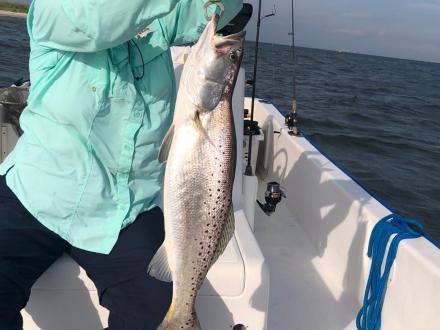
The trout get finicky in late spring and won’t hit artificial lures nearly as often. That’s the time to shift to live bait. Live shrimp is the most common bait, but just about every fish out there likes to eat shrimp, so be sure to carry plenty of bait. If you’re trying to catch the large trout, called yellowmouths, the best bet is to use small fish-like croakers, mullet, pinfish and menhaden for bait on a free line that lets the bait drift in the current. Use a split shot crimped about a foot above the hook if the bait keeps popping up on the surface.
Speckled trout are especially sensitive to water salinity. If we get tons of rain, the trout will head to the deeper holes where the salinity is higher. If we get into a prolonged dry spell, the trout will follow the bait wherever they go, which can be in the estuaries and river mouths.

Cooking Speckled Trout
With the popularity of the flattop griddles, take your trout filets and dust them with your favorite Creole or blackening seasoning, and pop them on the griddle. After a couple of minutes, flip the filets and repeat to get a slight crust on both sides. It’s a great way to prepare trout. Or you can do what anglers have done for millennia: dust them with fish fry mix and a little salt, and drop them in 350-degree oil until they’re golden brown!
If you're not in the mood to cook, take your haul to one of our cook-your-catch restaurants, and let the chefs prepare them for you!
